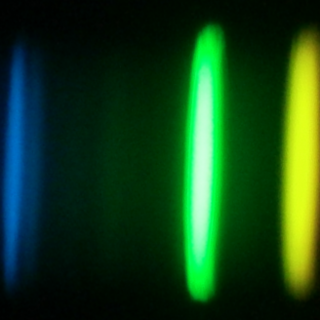Bibcode
Bovy, Jo; Allende-Prieto, C.; Beers, Timothy C.; Bizyaev, Dmitry; da Costa, Luiz N.; Cunha, Katia; Ebelke, Garrett L.; Eisenstein, Daniel J.; Frinchaboy, Peter M.; García Pérez, Ana Elia; Girardi, Léo; Hearty, Fred R.; Hogg, David W.; Holtzman, Jon; Maia, Marcio A. G.; Majewski, Steven R.; Malanushenko, Elena; Malanushenko, Viktor; Mészáros, Sz.; Nidever, David L.; O'Connell, Robert W.; O'Donnell, Christine; Oravetz, Audrey; Pan, Kaike; Rocha-Pinto, Helio J.; Schiavon, Ricardo P.; Schneider, Donald P.; Schultheis, Mathias; Skrutskie, Michael; Smith, Verne V.; Weinberg, David H.; Wilson, John C.; Zasowski, Gail
Referencia bibliográfica
The Astrophysical Journal, Volume 759, Issue 2, article id. 131, 20pp, (2012).
Fecha de publicación:
11
2012
Revista
Número de citas
369
Número de citas referidas
350
Descripción
We measure the Milky Way's rotation curve over the Galactocentric range
4 kpc <~ R <~ 14 kpc from the first year of data from the Apache
Point Observatory Galactic Evolution Experiment. We model the
line-of-sight velocities of 3365 stars in 14 fields with b = 0°
between 30° <= l <= 210° out to distances of 10 kpc using
an axisymmetric kinematical model that includes a correction for the
asymmetric drift of the warm tracer population (σ R
≈ 35 km s–1). We determine the local value of the
circular velocity to be Vc (R 0) = 218 ± 6
km s–1 and find that the rotation curve is
approximately flat with a local derivative between –3.0 km
s–1 kpc–1 and 0.4 km
s–1 kpc–1. We also measure the Sun's
position and velocity in the Galactocentric rest frame, finding the
distance to the Galactic center to be 8 kpc < R 0 < 9
kpc, radial velocity V R, ☉ = –10 ± 1 km
s–1, and rotational velocity V phi, ☉
= 242+10 – 3 km s–1, in
good agreement with local measurements of the Sun's radial velocity and
with the observed proper motion of Sgr A*. We investigate various
systematic uncertainties and find that these are limited to offsets at
the percent level, ~2 km s–1 in Vc .
Marginalizing over all the systematics that we consider, we find that
Vc (R 0) < 235 km s–1 at
>99 % confidence. We find an offset between the Sun's rotational
velocity and the local circular velocity of 26 ± 3 km
s–1, which is larger than the locally measured solar
motion of 12 km s–1. This larger offset reconciles our
value for Vc with recent claims that Vc >~ 240
km s–1. Combining our results with other data, we find
that the Milky Way's dark-halo mass within the virial radius is ~8
× 1011 M ☉.
Proyectos relacionados

Abundancias Químicas en Estrellas
La espectroscopía de estrellas nos permite determinar las propiedades y composiciones químicas de las mismas. A partir de esta información para estrellas de diferente edad en la Vía Láctea es posible reconstruir la evolución química de la Galaxia, así como el origen de los elementos más pesados que el boro, forjados principalmente en los interiores
Carlos
Allende Prieto